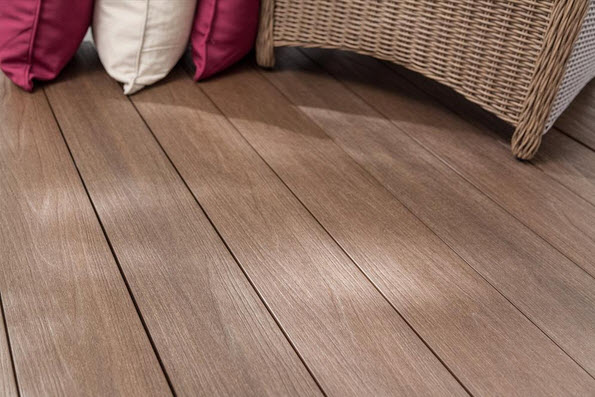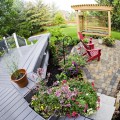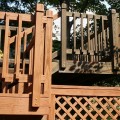Composite Decking Glossary
Composite decking is a durable option that’s easy to maintain, making it an increasingly popular low-maintenance choice for deck material. Since it’s available in a number of colors and styles, composite decking works well for a variety of backyard decks. Read on to learn some of the most common composite decking terms.
Baluster: These elements are important safety components in a deck’s railing. Typically, they are evenly spaced between railing posts and help keep people and objects from falling off the deck.
Contraction: Low humidity and freezing temperatures can cause composite boards to contract, or shrink. It’s important to know how much your deck boards will contract, keeping this measurement in mind as you plan and install your deck.
Dead load: The dead load refers to the weight of the entire deck, including supports, boards, and built-in elements.
Expansion: High humidity levels, excessive temperatures, and excess moisture can all cause composite boards to expand, or grow larger. When installing your deck, it’s important to factor in a certain amount of expansion so that it can weather the elements without compromising its structure.
Fasteners: Composite decking requires fasteners to hold the deck elements together. Fasteners include screws, bolts, nails, and special parts specific to select kinds of composite boards.
Grooved: Grooved boards are manufactured with channels along the edges. When you install grooved boards, you’ll use screws and fasteners that also function as spacers between boards. Since no nails or screws are present on the deck’s surface, grooved boards make for a neat, clean surface.
Hollow: Hollow composite boards, or engineered boards, are manufactured with interior ribs or holes instead of solid material throughout. Since they aren’t solid, hollow boards tend to be lighter and can be easier to install. Usually, hollow boards can easily be distinguished from real wood, but these boards are durable and can weather the elements.
Joist: The joist refers to the framework underneath the deck boards. This isn’t strictly a term for composite decking, of course.
Live load: This number refers to the total weight that the deck can support. As a general standard, decks can usually support 60 pounds per square foot.
Railing: The railing is the horizontal element that extends along the perimeter of the deck as well as along staircases. The railing is typically supported by posts and balusters, and it serves as both a handhold and a safety mechanism.
Solid core: For composite decking, choosing solid core boards will give you a real-wood look. Like wood, solid boards are solid all the way through, typically have slight variations in grain pattern, and tend to be heavy. Solid boards are known to be the most durable composite boards and can support the weight of heavy elements like furniture and grills.
Support post: Essentially the legs of the deck, the support posts keep the deck upright and take the weight of the entire structure.
Ungrooved: Ungrooved boards are manufactured with smooth sides. When you install ungrooved decking boards, you’ll need to use screws to hold them in place. Ungrooved boards are typically installed with minimal gaps in between, creating a smooth, even surface.
***
Resources:
http://www.nadra.org/consumers/decks_glossary.html





